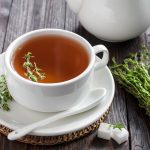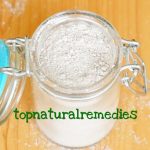Grape Pomace – A Cure for Diabetes, Heart Disease and Arthritis
Grapes and wine have been valued since ancient times for their consistent health promoting qualities. Grape pomace, the solid remains of grapes after pressing, contains the skins, seeds and stems of the grapes and thus it retains their essential therapeutic properties even more than wine does. And though today it is mostly used as a fodder or fertilizer, the medicinal properties of grape pomace are being also praised more and more, especially with every new scientific study that reveals yet another aspect of the biochemistry of resveratrol, the most important component of grapes and consequently of grape pomace.

Contents
Composition and properties
Grape pomace is essentially a much more concentrated form of grape and it thus has all the properties of grapes and wine, due to the high content of resveratrol and fair content of dietary fiber, minerals (copper, potassium, manganese, phosphorus, magnesium, iron and calcium) and vitamins (vitamin K, vitamin C, thiamin, riboflavin, vitamin B6). Resveratrol is one of the most powerful natural antioxidants and has been proven by thousands of scientific studies to be efficient in the treatment of various health problems. Resveratrol is not only a powerful antioxidant, anti-inflammatory and antiproliferative substance, but it also has hypoglycemic, nootropic and antiallergic properties.
Preparations
- Powder: It can be obtained by grinding the dried pomace. Take 1 teaspoon, 3 times a day, half an hour before a meal.
- Tincture: Add 20 g of powder in 100 ml of alcohol 70% and let it macerate for 10 days, shaking the recipient 3-4 times a day. Sift and let it decant for 6 days in the refrigerator, then transfer the more limpid part in smaller recipients. Take 30 drops in a glass of water, 2 times a day.
- Syrup: mix 100 g of powder with 100 g of honey and 200 ml of natural orange juice. Store in the refrigerator.
- Ointment: Boil 100 ml of grape pomace tincture until 80 ml of liquid is evaporated. Mix the remained 20 ml of liquor with 50 ml of butter, 50 ml of sunflower oil and 10 ml of lanoline and slowly heat the mixture, stirring until it becomes homogeneous. Take the mixture off the heat and transfer it into smaller recipients before it becomes solid. Store in the refrigerator.
Medicinal uses
Internal use
- Avitaminosis, demineralization
- Alzheimer’s disease
- Allergies
- Weak immunity
- Cancer
- Viral infections (including herpes and hepatitis)
- Fever
- Heart disease
- High blood pressure
- High cholesterol levels
- Obesity
- Diabetes, diabetic retinopathy
- Arthritis, rheumatism, gout
External use
- Varicose veins
- Arthritis, rheumatism, gout
- Wrinkles
- Wounds, bruises, burns



